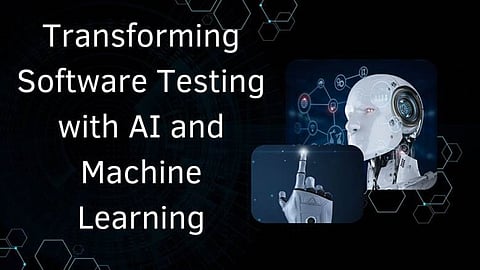

In this fast-evolving digital world, enterprises seek to enhance software quality and speed. Traditional test automation falls short of modern demands. Srikanth Kunchaparthy highlights how AI and ML revolutionize software testing, boosting efficiency, reducing maintenance, and improving reliability. AI-driven automation makes testing smarter, predictive, and adaptive to technological changes.
As enterprise applications grow more complex, traditional test automation struggles to keep up. AI and ML tackle these challenges with self-learning algorithms, predictive analytics, and real-time monitoring. These technologies boost accuracy, shorten testing cycles, and enable faster software releases, ensuring quality while meeting the demands of continuous deployment and updates.
A major AI-driven testing breakthrough is self-healing test scripts, which adapt to UI changes automatically, reducing manual maintenance. Using deep learning, automation frameworks detect modifications, preventing script failures and ensuring smooth deployments. This cuts maintenance costs and allows QA teams to focus on strategic testing instead of frequent script updates.
Manually managing test cases is time-consuming and error-prone. AI-driven test generation analyzes data and user interactions to create optimal scenarios. Using NLP and neural networks, AI converts requirements into precise test cases, enhancing coverage and accuracy. Over time, AI adapts, learning from results to improve testing effectiveness and reliability.
AI-driven predictive analytics helps organizations detect defects before they reach production. By analyzing bug reports, code commits, and user behavior, ML models predict failure points. This enables testing teams to prioritize high-risk areas, reducing post-deployment defects. Predictive testing enhances software stability, security, and overall reliability through proactive issue resolution.
Modern enterprise applications operate in dynamic environments with thousands of microservices and API endpoints. Real-time monitoring powered by AI helps in detecting anomalies during test execution. Advanced ML models analyze test results in real time, identifying failures, performance issues, and unexpected behaviors, ensuring rapid incident response and reducing downtime. These intelligent monitoring tools provide deep insights into system performance, allowing businesses to preemptively address potential issues before they escalate.
When a test fails, identifying the root cause can be a tedious process. AI-powered diagnostic tools simplify this task by automatically analyzing test logs, system events, and historical defect patterns. These tools can correlate test failures with system performance metrics, allowing developers to pinpoint and resolve issues faster. Automated root cause analysis significantly reduces debugging time, allowing teams to focus on innovation rather than troubleshooting.
Machine learning algorithms help optimize the execution of tests by ranking test cases based on risk. The test cases to run first are determined by an AI-driven system factoring in numerous criteria, like historical defect data, code complexity, and frequency of program change. Consequently, the testing cycles are shortened while the consumption of resources becomes more efficient. High-risk areas are tested at first, ensuring that organizations quickly obtain information concerning critical issues, which ultimately indicates better overall quality and speed of software.deployments.
The story of AI and ML development in the field of test automation will surely continue with advancements like quantum-inspired algorithms and autonomous test environments on the verge. Trends in the future involve the increasing use of AI with visual testing and improved low-code/no-code platforms along with synthetic data generation for increased test coverage. Along with the integration of AI into DevOps workflows to support seamless continuous testing, this is expected to enhance automation processes. With organizations continuing to refine their AI strategies, we might soon see an augmentation of advances in automation that would allow for self-sustaining testing ecosystems.
To larger extent, test automation with AI affords benefits of improved accuracy, faster test execution, lower maintenance cost, and better test coverage. Also, the adaptability of AI-supported testing frameworks is enhanced through continuous learning from prior test cycles to improve efficiency. Incorporation of AI within the testing strategy permits the optimal use of resources while helping minimize risks and expedite software delivery without compromising quality.
While AI-based test automation does have advantages, there are challenges. Infrastructure, trained resources, and data governance strategies are required to pull fully on AI capabilities. Having AI models trained by high-quality data guarantees that predictions would be accurate, and automations work better. The culture here to adopt AI in test automation encourages collaboration between QA engineers, developers, and AI professionals.
In conclusion, Srikanth Kunchaparthy maintains that AI and ML are transforming the software-test arena on bases of efficiency, flexibility, and accuracy. Less manpower can be employed, guaranteeing better quality and faster development. AI-based automation makes testing quicker and reliable; therefore, setting an entirely different quality assurance and innovation benchmark in the digital world.
